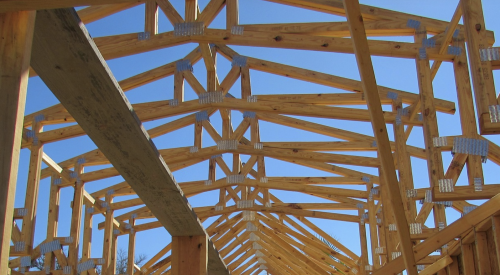| Dean Horowitz, Publisher |
A few years ago I was at a Memorial Day picnic and found myself seated next to the hostess’s father. He was retiring soon from a long career as a builder/developer, so I thought this would be the best place for a relaxing conversation amongst a crowd of people I didn’t know.
I was wrong.
It all began in a friendly enough way as I asked him about his business. He told me about the homes he had built over the years and his employees. We discussed the subcontractors he had worked with for more than 20 years and the family events they all attended together to this day. He told how he had developed a formula that enabled him to build homes that sold quickly. He considered himself the master of value engineering, a process that looks at construction with an eye toward driving out costs without compromising quality.
I was hopeful about the afternoon. I asked about his margins and was told he had done well in his career. Of course, but how much margin improvement did he achieve per house through value engineering? “Not sure,” he said.
No longer quite as hopeful, but undeterred, I asked him about his relationships with his product suppliers and how they had helped his value engineering. He blasted back that there wasn’t a reason to have a relationship with a manufacturer. They, like him, he explained, are out to make as much money as they can, and he refused to be taken advantage of by them.
This couldn’t go unchallenged.
I told him about the manufacturers I know that differentiate themselves by providing their builder customers with technical services, business and product education, and option programs designed to help them capture more profitable product upgrade sales. The goal of these companies, I explained, is to help builders grow and create more sustainable businesses. In helping them do that, the manufacturer helps its cause as well.
He began to raise his voice in response as he explained it was simple math: Lower your material costs, and you make more money. Simple. I met him with the same tone as I said higher costs also could mean making more money when that material pricing results in reduced labor costs and/or nets a higher selling price.
When we look at the cost of constructing a home today — land/lot costs, labor, permits, SG&A expenses, etc. — the biggest piece of the pie is building products. Add to that first cost the added price of fixing and replacing products that do not perform as intended (not even considering the cost attached to what is now probably an unhappy customer), and it is absurd to think there is no value for a builder in having a relationship with a product manufacturer. These companies have teams of people in place just to understand how they can get and keep your brand loyalty.
But back to the picnic. After a breather, he asked what I did for a living that made me think I knew so much about home building. I told him about the magazines, Web site and conferences I work on in the residential construction market. I also told him I did not claim to know so much but instead that I had witnessed manufacturer/builder relationships that work for both companies.
In each issue of PB are ads from numerous manufacturers committed to gaining builders’ loyalty through services, high-performance products, solution-based ideas and, yes, rebates. They want to be dominant brands in the business. They understand that a close relationship is mutually beneficial and can do a lot more to boost margins than just a low price. If you haven’t built these relationships, please take the time to do so. E-mail me if you want some recommendations.












